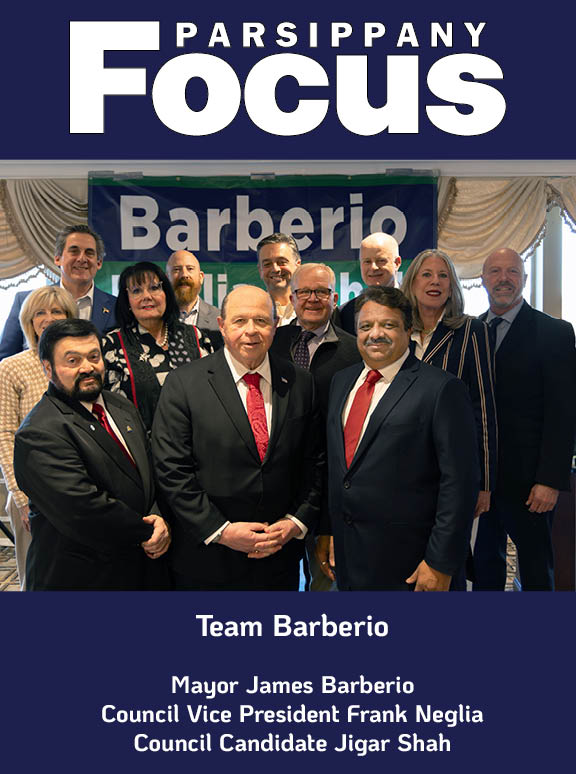PARSIPPANY — On Monday, October 28, Parsippany-Troy Hills Council Members Judy Hernandez and Justin Musella visited Troy Meadows to witness the ongoing impacts of stormwater runoff and pollution from single-use plastics and Styrofoam. During their visit, they examined how discarded products, often from everyday conveniences, accumulate in the wetland ecosystem. One potential solution they discussed was the use of trash nets—an approach used in various municipalities to catch debris before it reaches sensitive areas.
Hernandez and Musella’s visit underscores the urgency of addressing waste at both the production and consumption levels. “If more people were exposed to the reality of single-use products and Styrofoam’s environmental toll, it could drive change,” said Musella. Hernandez agreed, noting, “Outcome is always more important than intention when it comes to protecting our community and natural spaces.”
The Causes of Waste Pollution: From Production to Individual Actions
Pollution in Troy Meadows—and ecosystems across the globe—stems from two main sources. First, there’s what might be called the “efficient cause”: manufacturers who prioritize profit over environmental impact. By producing convenient, single-use products without considering their ultimate environmental toll, companies contribute to the waste that burdens local communities. This negligence adds hidden costs, such as waste management fees, that are often absorbed by taxpayers.
Then there’s the “instrumental cause”: individuals who discard items irresponsibly, lacking respect for their environment and community. This “last step” in the convenience philosophy sees products—now waste—left on streets, sidewalks, and parks, eventually finding their way into waterways and sensitive ecosystems like Troy Meadows.
The Alarming Reality of Microplastics
Adding to the concern is the proliferation of microplastics. These tiny plastic particles, now found in water, soil, and even the bodies of living creatures, do not biodegrade. Manufactured from petroleum derivatives, plastics involve toxic chemicals like mercury and chlorine. Once in the environment, plastic pollution perpetuates a cycle of contamination, impacting health, and ecosystems, and potentially contributing to climate change. Pollutants from urban areas flow into our rivers and marshes, embedding toxins in the soil and waterways, and threatening future generations.
As Council Member Hernandez remarked, “Our society needs a ‘Golden Rule’ that reveres life above economic interests.” Single-use plastics and Styrofoam, she notes, violate this principle, prioritizing short-term convenience over long-term sustainability.
Troy Meadows: An Essential Part of Parsippany’s Master Plan
Troy Meadows spans approximately 3,100 acres, with over 1,740 acres in Parsippany alone. This ecosystem of swamps, marshes, and floodplains supports a diversity of life and is critical for flood mitigation, stormwater management, and carbon capture. Recognized by the NJDEP as a National Natural Landmark and designated by Morris County as an I-A Exceptional Ecological Area, Troy Meadows is integral to regional biodiversity and environmental health.
Parsippany’s Master Plan, particularly Goal 7, emphasizes the need to protect such natural resources. It calls for the preservation of wetlands, streams, wellhead areas, and other sensitive landscapes, specifically instructing that Troy Meadows remain in its natural state. Development here, according to township policy, should be avoided to safeguard public health and welfare for Parsippany and the wider region.

Taking Action for Troy Meadows
Despite its significance, Troy Meadows has often been treated as an afterthought in Parsippany’s planning efforts. “Troy Meadows is part of our Master Plan, but we’ve treated it like a stamp without the envelope,” said Council Member Musella. Hernandez and Musella hope their recent visit will spur the township to take actionable steps to protect this vital ecosystem.
As environmental advocates and residents have urged, the time has come for Parsippany to uphold its commitment to Troy Meadows. Implementing trash nets, promoting sustainable consumption, and enforcing litter regulations are just a few ways the township could begin reducing the pollution burden on this ecologically critical area. By championing policies that protect Troy Meadows, Parsippany can create a cleaner, healthier environment for today’s residents and future generations alike.
It’s time Parsippany did something to help our Troy Meadows.
Article written by Nick Homyak
















